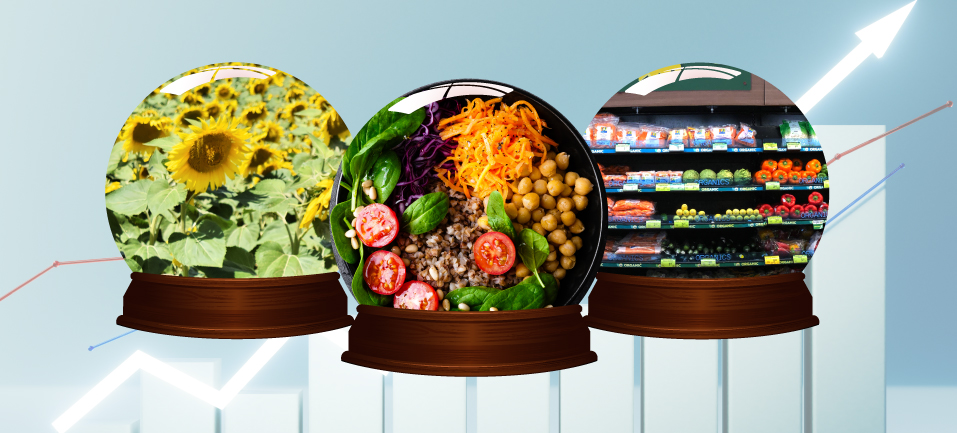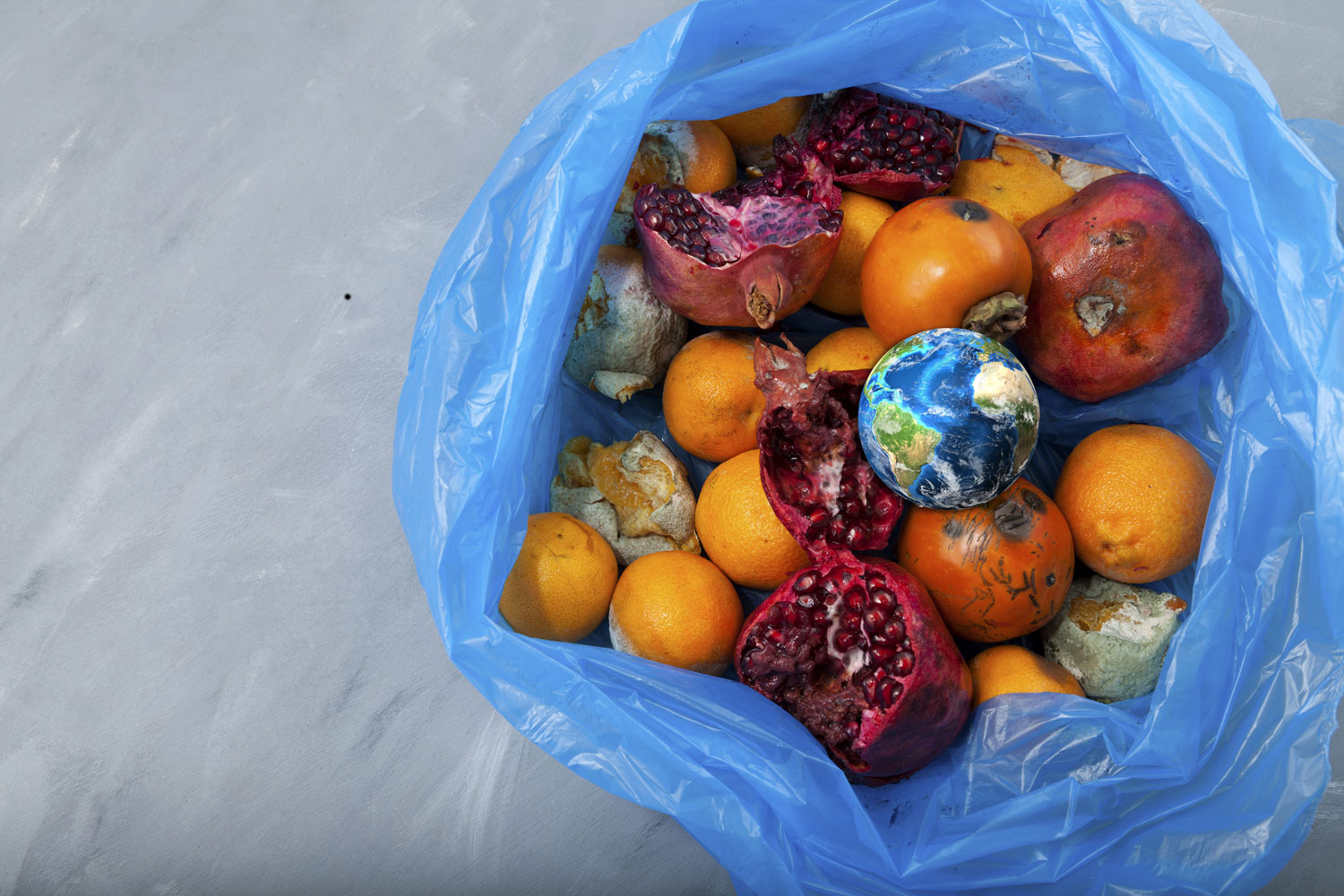
My Forecast for the Top Five Food Trends in 2023
It is that time of year again when trend predictions are everywhere. For over a decade, my business has been identifying and sharing health, nutrition, food, and agriculture trends. In 2023, we continue to navigate global uncertainty. This is shaping many aspects of our lives including how we eat, work and spend. Let’s explore my forecast for the top five food trends in 2023.
1) Health and wellness
Health and wellness are top of mind for many consumers since March 2020. The better-for-you category continues to thrive as people seek out foods and supplements to support their immune health, gut health and mental health. Consumers still allow for indulgence, but it needs to be affordable.
Innova Market Insights identifies affordable nutrition as their number two trend for 2023. They cite over the past 12 months, 62 per cent of consumers have reported a noticeable rise in the cost of their food and beverages. As a result, they are turning their attention to simple but nutritious goods that are affordable.
Consumers are actively looking for affordable ways to maintain a healthy lifestyle. Key behaviours include buying in bulk, opting for private labels, cooking from scratch, reducing spending on luxury items and purchasing fewer items. This offers brands many opportunities to test their capabilities to new limits. Therefore, to meet the nutritional, environmental and economic demands of consumers, manufacturers must innovate to extract maximum value from raw materials and the production process.
2) Upcycling – waste with a purpose
I had to include upcycling in my forecast for the top five food trends in 2023. As global volatility is on the mind of consumers, the concept of upcycling is welcomed by many. Innovative companies are identifying nutritious by-products and are converting them into novel upcycled ingredients. When food is wasted all the natural resources used to produce the food are wasted. When you upcycle, you don’t need to grow more crops, occupy more land, or consume more water. It supports a circular economy.
Sustainability awareness was accelerated during the global pandemic and the Russia Ukraine war. Supply chains were suddenly thrust into the limelight with consumers paying more attention to how their favourite products were sourced. Consequently, traceability, food waste and transparency got a boost with those supply chain disruptions and consumers’ expectations of wanting to understand their foods’ gate to plate journey and footprint now and in the future.
There are obvious functional and nutritional benefits of upcycled ingredients. Food companies are discovering how to incorporate these pioneering ingredients effectively into their products. Additionally, the concept of upcycled ingredients offer the food industry an innovative opportunity to bring delicious, nutritious products to market, while reducing food waste.
3) Healthy for our pets
In June 2022, Euromonitor International identified the top five trends in pet care. Both premiumization and wellbeing are on that list. The report revealed humanizing pets, owners are increasingly eager to provide them with high-quality, premium food and products. Premiumization involves giving pets foods made from ingredients people would accept on their own plates. As consumers are searching for specific benefits from the products they purchase, brand owners are expanding their premium products with the aim of achieving higher margins.
Whole Foods Market’s top 10 food trend predictions for 2023 includes Only the Finest for Fido. They suggest with a return to the office for many pet parents, a focus on Fido’s wellness and palate is more important than ever. Pet supplements like bone broth have exploded onto the scene, and pet food recipes are dialing up the deliciousness. Plus, all pet food and supplements at Whole Foods Market are required to meet our industry-leading Quality Standards for ingredients, making well-being easy for our furry friends.
Karen Rushton, vice president merchandising, Pet Valu Canada Inc. agrees, “There are more products coming to market with healthy ingredients, better for pets and often more palatable. There is an increased focus on transparency. Knowing what is in our food is paramount for humans and pet parents want the same transparency for the food and treats they buy for their furry family members. With pets increasingly viewed as members of the family, the overall concern and emphasis on health is reflected in devoted pet lovers’ buying decisions for their pet.”

4) Regenerative farming
Consumers want the idea of Shared Planet – what is better for me, must be better for the planet. To do this we need common ground among the different ways we farm globally. Along with measured outputs by qualified metrics that these farming practices have on the entire complex system. This is not without its challenges; however, we only have one earth, and we need to focus on repair and regeneration now.
While there is no agreed upon international definition of regenerative agriculture, it is based on a global wellbeing approach and a set of practices that promotes a strong ecosystem and gives back to the land that we need now and in the future. There is an emphasis on soil health and plant and animal diversity. Expect to see more from visionary entrepreneurs engaging in regenerative agriculture who are creating seed-to-shelf future supply chains, funneling resources into the research and restoration of more localized, biodynamic food systems, carbon farming and indigenous farming practices, soil fertility, and seed diversity.
Innova Market Insights identifies farming the future as their number five trend for 2023. They recognize public curiosity for innovative technologies such as vertical and regenerative farming is increasing. As well as helping to maximize flavour, nutrition and yield, these advances can win consumer support where they are shown to improve the quality and sustainability of global food production. Also, brands need to demonstrate how novel production techniques are benefiting farmers, people and the planet.
5) Environmentally friendly foods
The Speciality Food Association forecasts environmentally friendly foods as one of their 2023 top food trends. Sustainability and environmental concerns are top priorities with consumers.
Jonathan Deutsch says, “With growing unrest over climate issues and their impact on the future food supply, products that feature some aspect of sustainable ingredients, upcycled ingredients, or environment-friendly packaging, are leading the way.”
Bold brand names, engaging visuals, and purpose-driven messaging are differentiating these environmentally friendly products in several categories. Plant-forward foods’ continued growth plays a role here. Ingredients like mushrooms, algae, seaweed and jackfruit are developed into innovative environmental focussed products. Consumers, especially Gen Zs and younger Millennials, want their food and beverage purchases to reflect their self interests, lifestyle, and values including the environment.
My Forecast for the Top Five Food Trends in 2023 – Final thoughts
Although none of us have a crystal ball, as an industry thought leader and health professional for over two decades, I am convinced my top five trends forecasted for 2023 will flourish.




